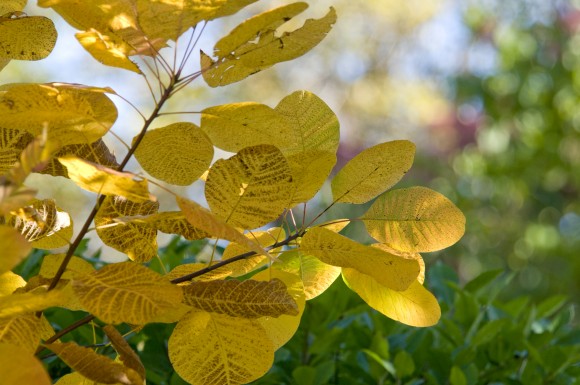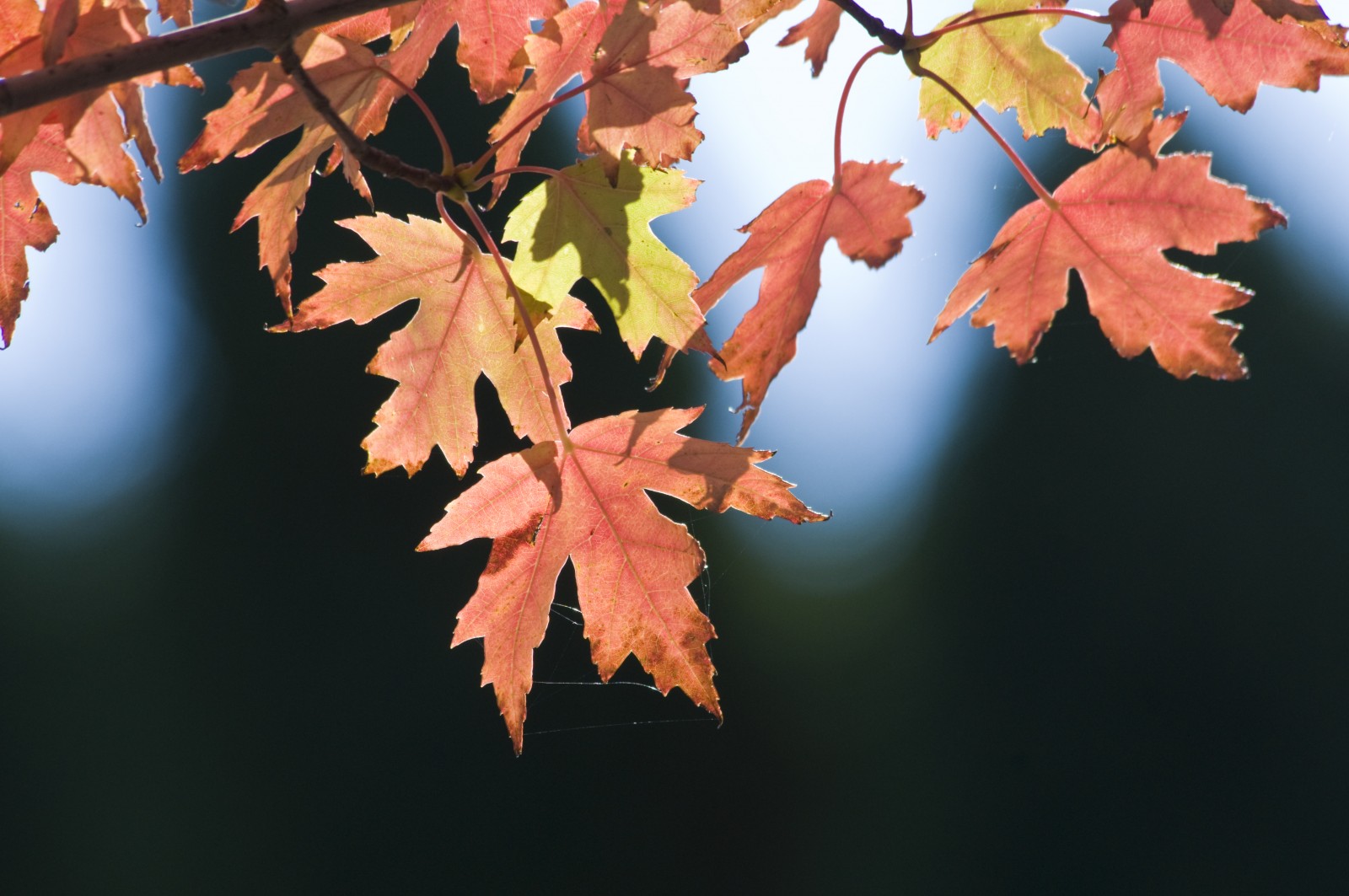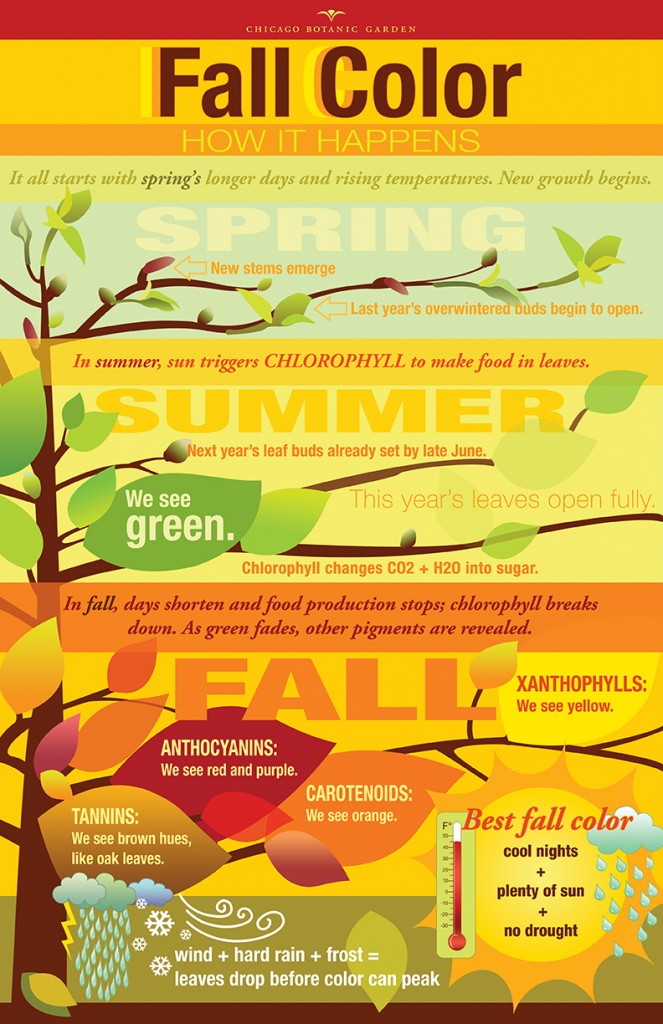Most of us remember chlorophyll from science class, as the chemical that makes leaves green. But ask why leaves turn color in the fall, and we get vague quickly. Colder temperatures? Shorter days? True, but there’s more to the story.

A summer leaf, full of chlorophyll, looks green. But once chlorophyll production stops in fall, the colors overwhelmed by green are revealed: yellow, orange, or brown, the colors of carotenoid chemicals.
Reds, crimsons, and purples happen when sugar is trapped in the leaves. As sugar decomposes, it creates chemicals called anthocyanins.
According to Boyce Tankersley, director of living plant documentation, “Plant physiologists have understood the environmental factors that lead to fall color for many years. However, each of the 1,391 different taxa of trees and 2,319 taxa of shrubs here respond to these environmental signals in slightly different ways: new ‘arrivals’ join the display of fall colors on a daily basis. It’s a constantly changing tapestry of color from September to November!”
Other factors come into play too: nighttime temperatures, soil moisture, the tree’s own genetics, and, of course, the weather. A warm and dry September has meant a late start for color this year. Don’t miss a chance to see the full palette of fall color happening now at the Chicago Botanic Garden—take a fall walk or use our virtual guide: our Garden Guide app.
Check out our infographic below for the full fall story in living color.
Want to share our infographic? Download a print version here.
©2015 Chicago Botanic Garden and my.chicagobotanic.org


